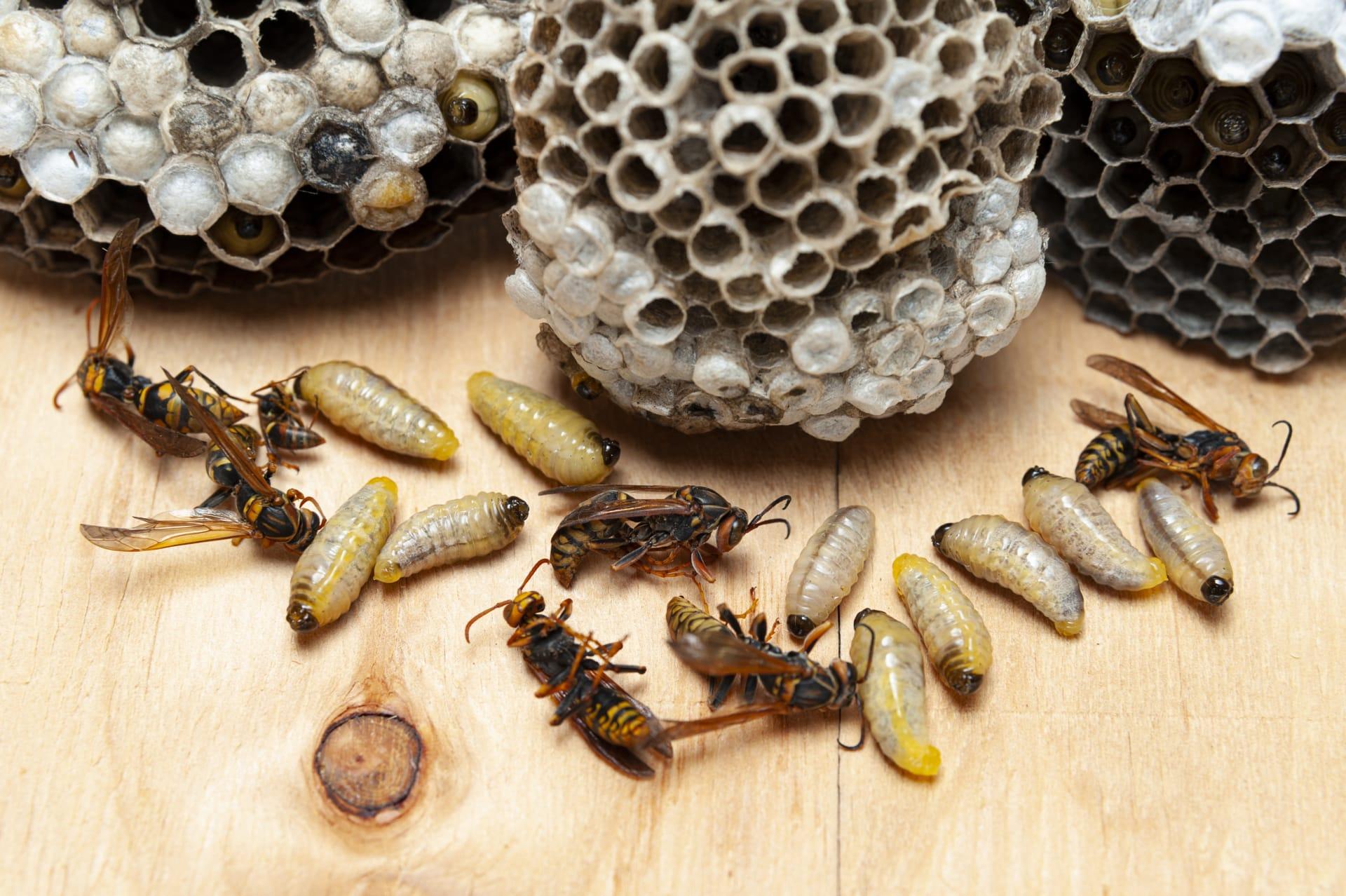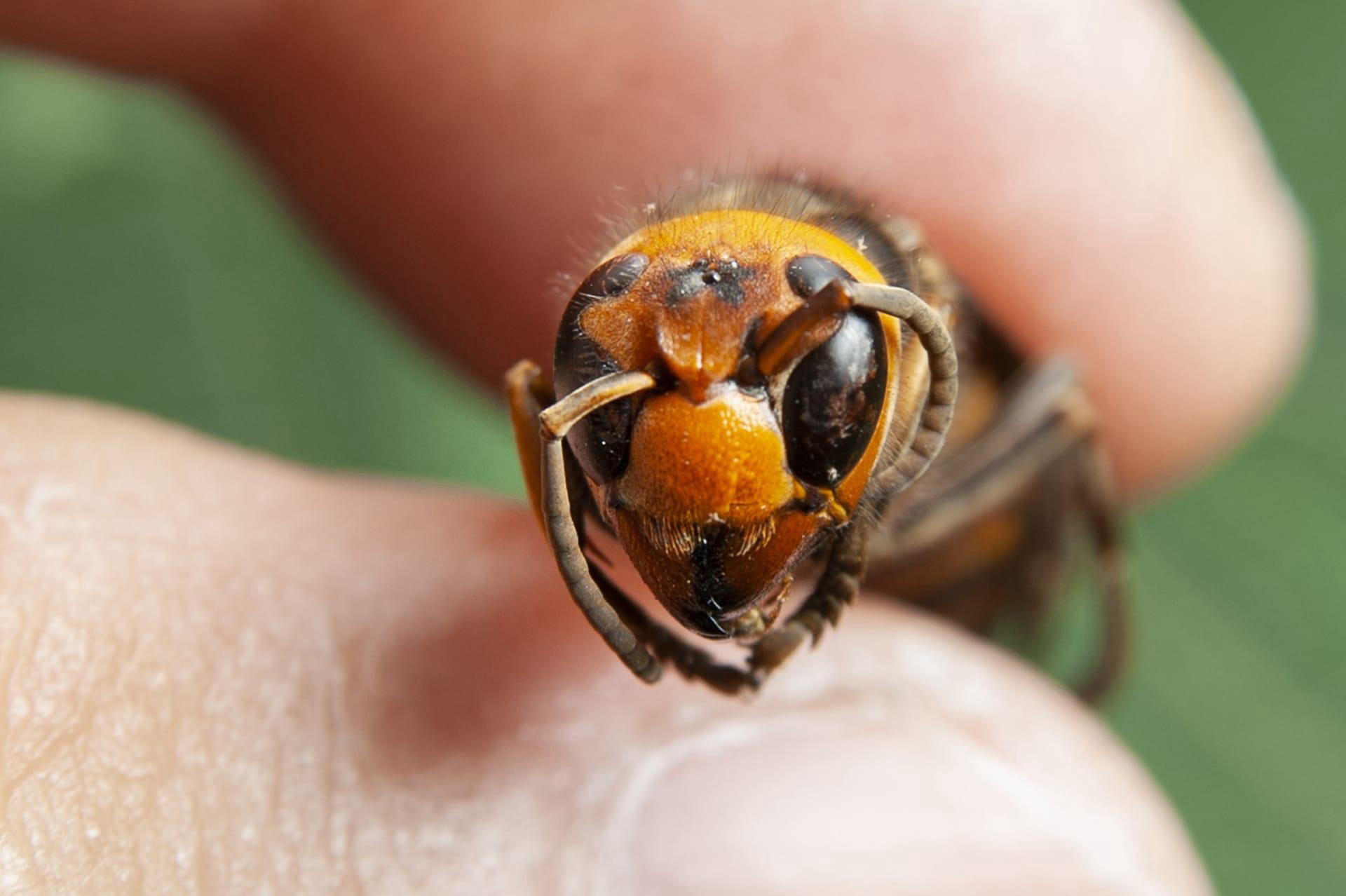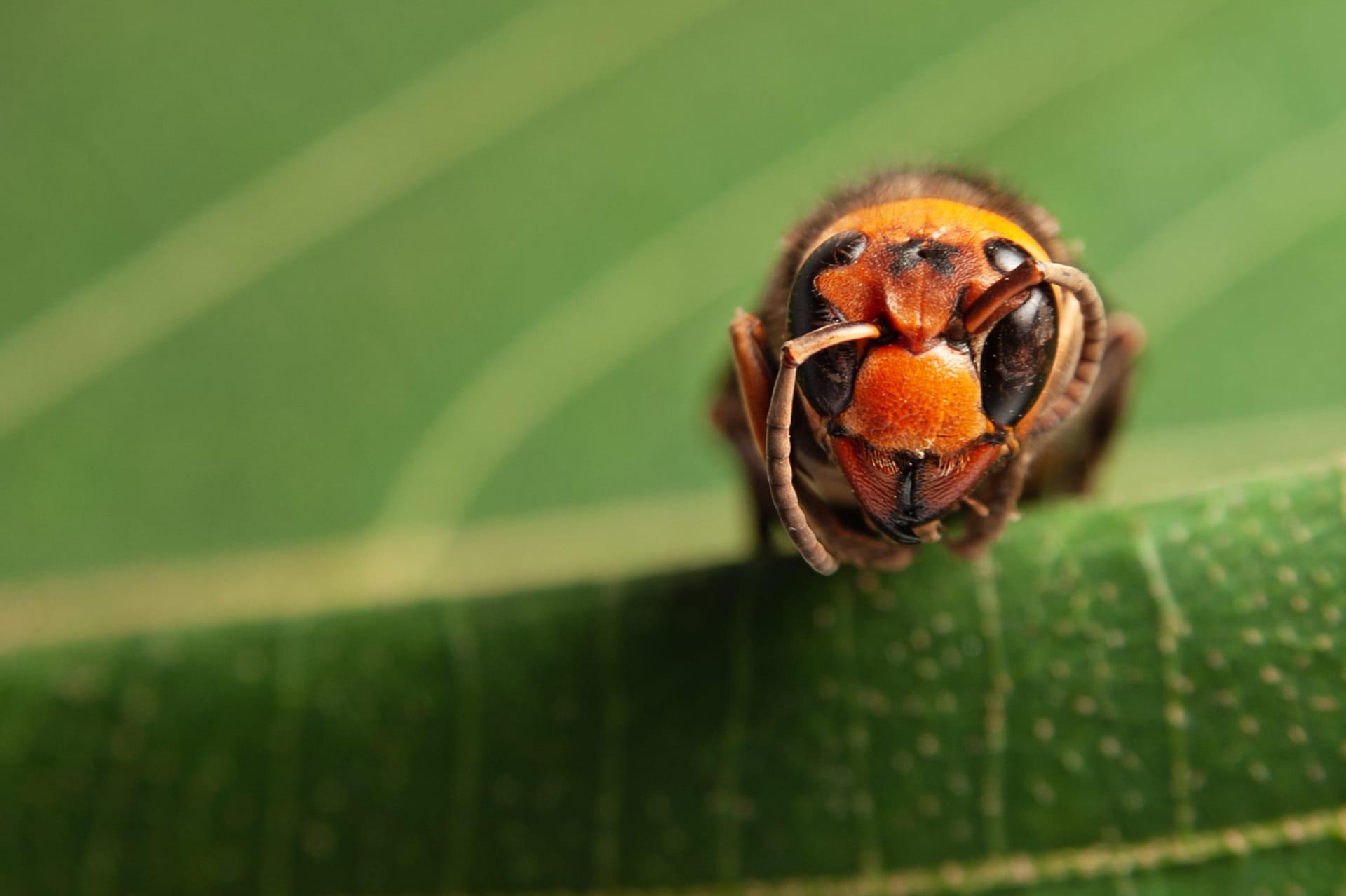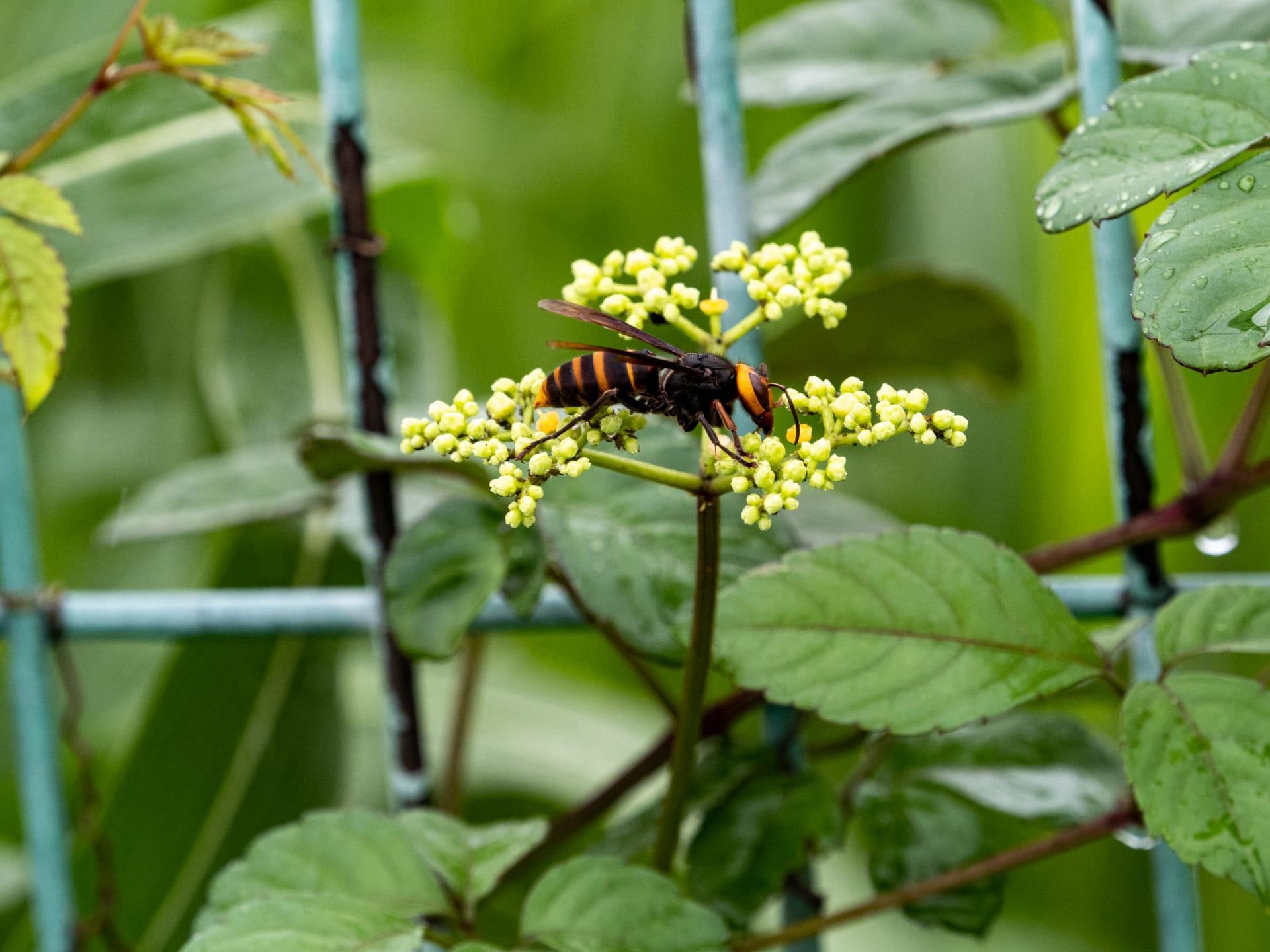1
Did you know the Japanese Hornet (Vespa mandarinia japonica) is the largest hornet species in the world? These giants can grow up to 2 inches (5 cm) long, making them quite formidable. Their wingspan extends to about 3 inches (7.5 cm), which is larger than some small birds! Besides their size, these hornets are known for their striking coloration. They sport a vibrant yellow and black pattern, easily distinguishing them from other hornet species.
One of the most fascinating aspects of Japanese Hornets is their venom. It's not only painful but also contains a neurotoxin called mandaratoxin. This toxin can be lethal to humans if enough stings are received; however, fatalities are rare. The venom is potent enough to dissolve human tissues and is used by these hornets to defend their nests aggressively. A single sting can result in severe pain, swelling, and, in some cases, anaphylactic shock, a severe allergic reaction that requires immediate medical attention.

2
Japanese Hornets have a unique way of hunting. They are known for their coordinated attacks on honeybee hives. A single scout hornet can mark a bee hive with a special pheromone, signaling other hornets to launch a group attack. Once the hive is located, the hornets use their powerful mandibles, capable of decimating an entire bee colony in a matter of hours. Despite their size, they are incredibly agile hunters.
Another interesting fact about these hornets is their contribution to agriculture. While they are feared for their attacks on honeybees, Japanese Hornets also play a role in pollination. Their large bodies are capable of transferring pollen between flowers as they feed on nectar. Additionally, by preying on insects that are harmful to crops, they indirectly aid in agricultural pest control, making them a natural ally to farmers in maintaining the health of their crops.

3
The Japanese Hornet's life cycle is quite intriguing. In spring, a fertilized queen emerges from hibernation to establish a new colony. She starts by building a small nest and laying eggs, which hatch into larvae. These larvae are fed an assortment of chewed-up insects caught by the queen. By late summer, the colony reaches its peak, with hundreds of workers supporting the nest. The hornets' nest, often found in hollow trees or underground, can grow to the size of a basketball.
Communication within a Japanese Hornet colony is highly sophisticated. These hornets use a range of methods, including pheromones, sounds, and even body vibrations, to communicate. For example, when a scout hornet finds a food source, it returns to the nest and performs a special dance to inform the others about the location and distance of the food. This level of social coordination is crucial for the survival and efficiency of the colony.

4
Japanese Hornets are known for their endurance. During foraging, they can fly up to 60 miles (100 km) in a single day. This incredible stamina allows them to cover vast areas in search of food. Their flight muscles are highly efficient, and they possess a remarkable ability to regulate their body temperature. This thermoregulation is essential for long flights and helps them maintain energy levels.
These hornets have a unique cooling system. In the heat of summer, workers can often be seen collecting water, which they bring back to the nest. They then spread this water around the nest and fan their wings, creating an evaporative cooling effect. This natural air conditioning system helps regulate the temperature inside the nest, ensuring the larvae and the queen remain at a stable temperature for optimal development.

5
Japanese Hornets are not only predators but also scavengers. They are often seen feeding on the carcasses of larger animals, such as birds and mammals. This behavior is beneficial for the environment as it helps in the natural process of decomposition. By breaking down these carcasses, they contribute to nutrient cycling in the ecosystem.
Lastly, the Japanese Hornet is culturally significant in some regions of Japan. In parts of the Japanese countryside, hornet larvae and pupae are considered a delicacy. They are often harvested from nests and cooked in various ways, including being fried or incorporated into sushi. This practice highlights the hornet's role not just in the ecosystem but also in regional culinary traditions, showcasing the diverse ways in which humans interact with and perceive wildlife.